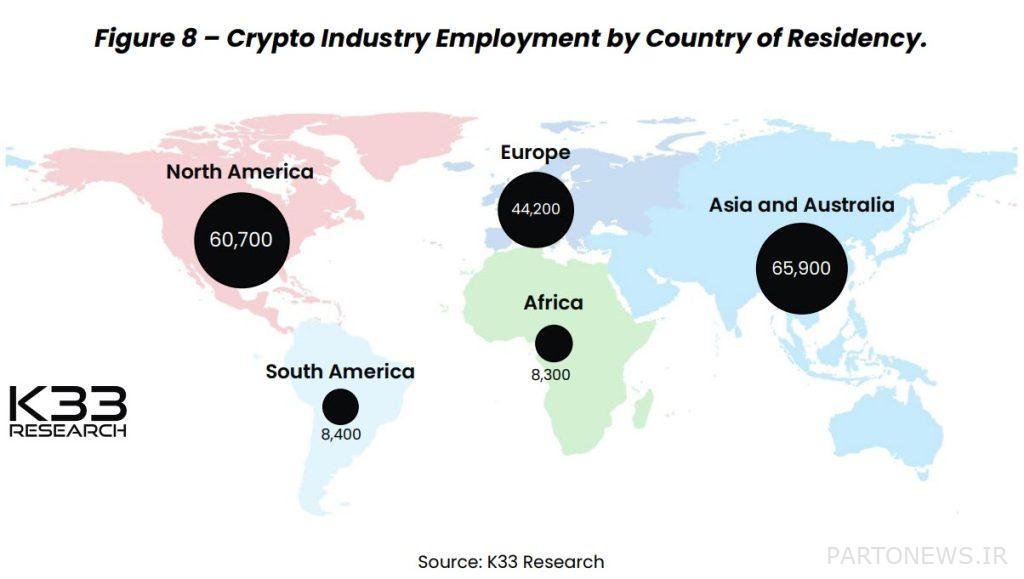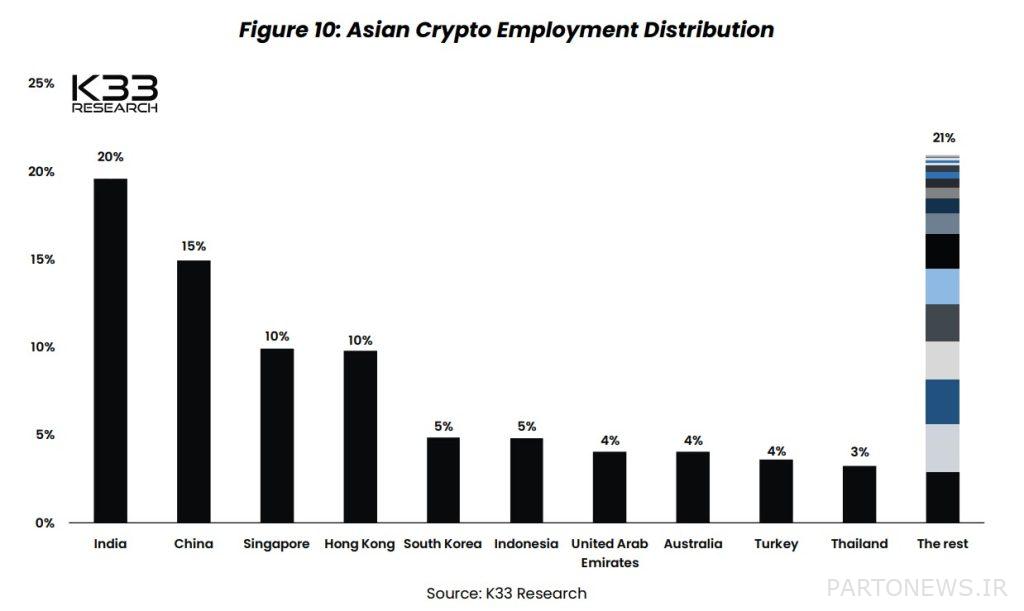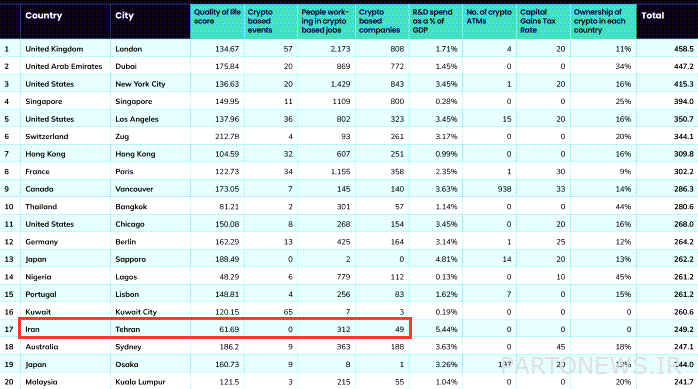190,000 people in the world work in the digital currency industry; How much is Iran’s share?

Research department of the Norwegian Institute of Capital Management “K33” recently a report Jame has published the state of the digital currency industry and the number of people working in this field. In this report, Iran’s share of the employment market of the digital currency industry in the world and Asia is not specified, but this share can be estimated with methods.
According to AruzDigital, K33 research shows that there are currently a total of 190,000 people working in the digital currency industry worldwide. Although this figure is much higher than the figures from before the start of the cryptocurrency bull market in 2020, it is a significant decrease from the 211,000 associated with 2021.
According to K33 researchers, about one-third (62,400 people) of people active in this industry work in digital currency exchanges or brokerages, and these trading complexes play a prominent role in hosting the workforce active in the digital asset industry.
K33 researchers have collected this data using methods such as searching on the social network LinkedIn, examining the company database on platforms such as Crunchbase, and Internet searches with the help of artificial intelligence.
What is Iran’s share of employment in the digital currency industry?
More than 34% of digital currency industry employees reside in Asian countries (plus Australia) and Asia ranks first compared to other continents. However, the United States has the largest population compared to other countries, hosting 29% of the cryptocurrency industry’s workforce.

The image below shows the share of each Asian country from the population of 65,900 people working in the digital currency industry of this continent, of course, the name of Iran is not seen among them, and Iran’s share is probably included in the section related to other countries (The rest). India, China and Singapore are ranked first to third, and countries such as the United Arab Emirates and Turkey from the Middle East also have a significant share of the Asian workforce active in this industry.

Although the K33 Institute has not specified Iran’s share of the population of people working in the world’s digital currency space in this report, there are other similar reports in which references are made to the number of employees in the country’s digital currency industry.
For example, early this year, Recap Capital Management Institute published a report on the world’s top digital currency cities, in which Tehran was seen as the 17th best city in this ranking.

According to the data collected by Recap, 49 companies related to digital currencies are active only in Tehran (not other cities of the country) and a total of 312 people from this city are employed in this industry.
However, as can be seen from the statistics related to the spread of the digital currency industry and the expansion of businesses active in this field over the past years, it can be said that Recap’s data about Iran does not have the necessary accuracy.
The reports related to the end of 2022, only two domestic exchanges active in Tehran show that these groups have a total of 388 human resources. Therefore, the statistics of 312 employees of 49 Tehrani companies published by Recap is far from the expected figures.
In addition, if we want to refer to the statistics available on the LinkedIn page of companies active in the field of digital currencies, like K33 researchers, it should be said that only 10 exchange Known Iranian as a whole 970 people They have manpower. This means that if Iran’s share is measured correctly in the K33 report, our country is probably more than 1.5 percent of the workforce active in this industry in the continent of Asia and over 0.5 percent of employees has taken over the space of digital currencies on a global scale.
Keep in mind that measuring the active population in Iran’s digital currency industry requires more detailed and extensive statistical investigations, and the statistics mentioned in this article are based solely on the data and simulation of the institute’s information collection method. K33 is estimated.

